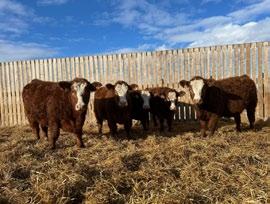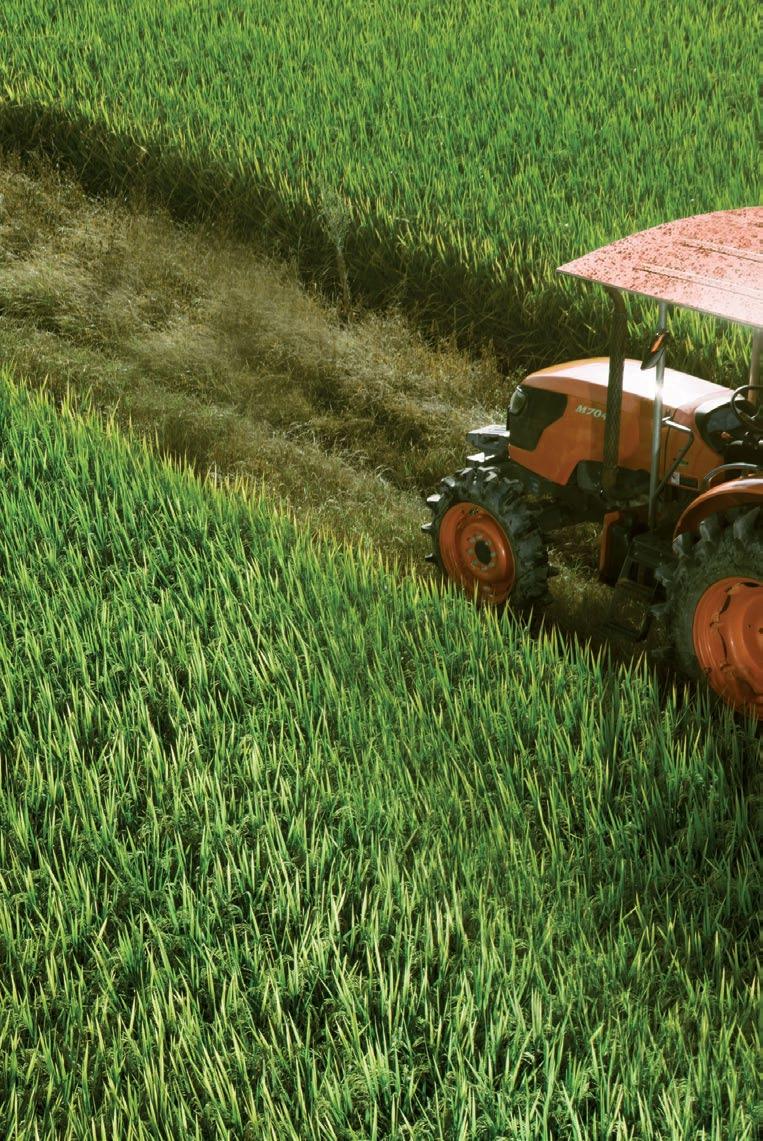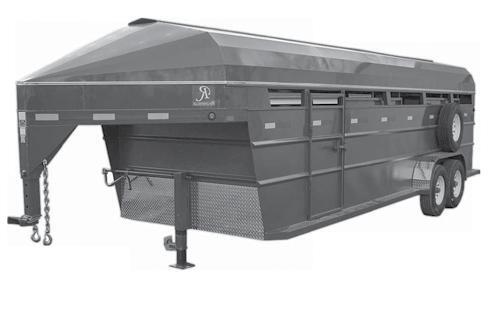


Your safety is worth the extra step —stay safe on the farm!









Your safety is worth the extra step —stay safe on the farm!






ascension as King of Canada.
tion.
Three dedicated members of the Lt. Col. Craig Armoury Historical Society in Vermilion were recently recognized for their exceptional contributions to the community. On March 10, Jim Storch, Bob Fisher, and Don Henry were each presented with the King Charles III Coronation Medal by MP Shannon Stubbs. The Coronation Medal program was first announced on May 3, 2023, three days before King Charles III’s coronation. Rideau Hall later unveiled the medal’s design and program details on May 6, 2024, the same day the Governor General awarded the first medals to Lieutenant Governors and Territorial Commissioners in a virtual ceremony. Designed by Cathy Bursey-Sabourin, Fraser Herald at the Canadian Heraldic Authority, the medal commemorates King Charles III’s
To be eligible for the award, nominees must have made a significant contribution to Canada or their local community, or achieved something outstanding abroad that brings credit to Canada. Candidates must have been alive on May 6, 2023, though the award may be presented posthumously if the individual met the criteria on that date.
Jim Storch and Bob Fisher were both nominated by Don Henry, President of the Lt. Col. Craig Armoury Historical Society, while Henry himself was nominated by the society’s Communications Officer, Heather MacMillan. Their extensive efforts in preserving the historic armoury and contributing to the community made them deserving recipients of this prestigious honour.
Jim Storch’s passion for community service was highlighted in his nomina -
Storch has been an integral part of the Lt. Col. Craig Armoury Historical Society, serving as secretary and treasurer. His involvement with the cadets is deeply personal—he credits a cadet uniform’s heavy tunic for protecting him from serious injury in a 1985 car accident. Since then, he has dedicated himself to giving back to the cadet community.
Beyond the armoury, Storch has made a lasting impact in various organizations. He is a member of the Mannville Elks Lodge, a founding member of the Mannville Food Bank (now retired), and has been actively involved in the Mannville and Area Performing Arts Society for 18 years. His contributions extend to 4-H programs, the Royal Canadian Legion, the Vermilion Fair Heavy Horse Committee, and the Mannville Classic Cruisers.
Upon receiving the medal, Storch expressed his gratitude and surprise. “It’s a great honour to have been nominated and won. When I learned that it was for volunteering in our community, I was overwhelmed. I just go out and have some fun with friends,” he said. “Being presented with this medal is very humbling, and I look forward to continuing to serve our communities for a long time.”
Bob Fisher’s dedication and perseverance was highlighted in his nomination. Fisher’s journey with the Lt. Col. Craig Armoury began in 2012, when Don Henry asked him to assist with repairing the ladies’ washroom. Recognizing his exceptional skill and dedication, Henry continued to enlist his help with various projects, including the installation of the hall floor and the repair of the upstairs office window.
Continued on page 2
Continued from page 1
“Over the years, Mr. Fisher has become an indispensable part of our team, always willing to lend a hand and contribute his expertises to ensure the upkeep of the armoury,” said Don Henry in his nomination letter.
Fishers expertise as a Heavy Duty Mechanic and his additional training in fire apparatus repair made him an invaluable asset to his volunteer work. Over the years, he has played a crucial role in maintaining the historic building, ensuring it remains a functional space for the community.
Growing up as an “Air Force brat,” Fisher moved frequently, which instilled in him a sense of adaptability and service. Though he never served in the military, he became a respected instructor at the Alberta Fire Training School where he excelled as an instructor and evaluator until his retirement on July 1, 2020 and

continues to teach and evaluate courses today when needed. His parents’ dedication to service—his father as a lab technician and his mother as a St. John Ambulance instructor—inspired him to follow a similar path.
Fisher was deeply moved by the recognition. “I was surprised to find out I had been nominated and especially to have won. I never expected anything like this,” he said. “I just wanted to help keep the Armoury in working condition because it’s an important part of Vermilion’s history and community.”
Don Henry’s lifelong commitment to youth development was just one reason for his nomination.
Henry’s involvement with the armoury dates back to 1969 when he joined the 2645 Loyal Edmonton Regiment Cadet Corps at the age of 13. His cadet experiences took him to Arctic Indoctrination
A special dad is hard to find, You dad I’m keeping in my mind, I wished you could have stayed forever, But I will never forget you oh not ever. If dreams weren’t dreams and dreams came true, I wouldn’t be here I’d be with you. Distance is one thing that keeps us apart, But dad you will always remain in my heart. A special smile, a special face, a special someone I can’t replace, I love you and I always will. You filled a space that no one will ever replace.
We Miss You Dad Eugene, Tracey and Anna Yurystowski and Family
Camp in Churchill, Manitoba, and the sixweek Cadet Leader course in Vernon, BC Canada, and he was qualified as a basic parachutist with the Canadian Airborn Regiment in 1974, eventually leading him to become an instructor and a Commanding Officer for the Corpsrole he would hold twice.
A skilled Heavy Duty Mechanic, Henry later became an instructor at Lakeland College, where he spent 37 years shaping future professionals and wrote North America’s only textbook on Fire Apparatus Maintenance. His passion for mentorship and leadership stems from his cadet training, and his motto, Acer Acerpori—As the maple, so the sapling, reflects his dedication to nurturing the next generation.
nity. I was surprised to learn I was also nominated,” he said. “It’s rewarding to see our efforts acknowledged, but the real reward is knowing that the Armoury remains a valuable resource for youth and community groups, as 105 youth use the Armoury each week.” He also noted that the Society is very grateful for the generous donations from the Rotary, the Lions and the Community Closet that have been given to support the renovations in the building.

Henry was humbled by the honour. “I nominated Jim and Bob because I wanted them to be recognized for their hard work and dedication to the commu-




The recognition of Storch, Fisher, and Henry highlights the importance of community service and historical preservation. Their dedication ensures that the Lt. Col. Craig Armoury remains not just a historic site but a thriving hub for community engagement. Their stories serve as a reminder that even the smallest acts of volunteerism contribute to a greater legacy, enriching the lives of those around them.




















Lorna Hamilton Reporter
In a heartwarming display of community spirit, the Vermilion Community Closet presented donations to five local organizations on March 12 totalling a whopping $9,000, reinforcing its commitment to giving back.
Affectionately known as “the Closet,” the second-hand store specializes in selling gently used men’s, women’s, and children’s clothing, along with footwear, household items, and accessories and more. More than just a thrift store, the Closet operates as a charitable organization, using proceeds from sales to support
various community initiatives.
This year, the Closet distributed funds to the Vermilion Music Festival, FOCUS Society for Support Services, the Vermilion Senior Citizens Centre, the Vermilion Ukrainian Cultural Association, and Vermilion Soccer. Each organization expressed deep gratitude for the generous contributions.
The Vermilion Music Festival received a $500 donation to help cover registration fees. FOCUS was awarded $3,000 to support its essential transportation services. The Vermilion Senior Citizens Centre received $2,500, which will go towards much-needed flooring upgrades



and other renovations. A $1,000 donation to the Vermilion Ukrainian Cultural Association will assist in purchasing dance costumes, while Vermilion Soccer will use its $2,000 contribution to acquire new equipment.
In the fall of 2024 the Community Closet presented cheques to Friends of Vermilion Health Centre in the tune of $22,000. The Lt. Col. Craig Armouries Historical Society- $1,000, Vermilion Heritage Museum $1,500, Sword & Thistle Highland Dance $500, Santa’s Anonymous $500, STARS $2,000, Haying in the 30s $2,000, and the Vermilion Food Bank $2,000 for a grand total of $31,500.
The financial support from the Closet
makes a tangible difference in the community, ensuring that these organizations can continue offering valuable programs and services. Through its ongoing efforts, the Vermilion Community Closet exemplifies the power of generosity and community involvement, proving that small actions can have a big impact.
Long-time volunteer Rose Hardy noted that all proceeds once the overhead is paid goes back into the community.
“Supporting the community is what we are here for, thanks to everyone that has supported us so that we are able to continue giving back. Everyone who received cheques today were very grateful,” she said.
DATE: Saturday, March 29, 2025
SUPPER: 5:30 PM - 7:30 PM ADMISSION: Ages 16 &






Lorna Hamilton Reporter
The Vermilion Rotary Club took significant steps in the fight against polio, raising awareness and collecting donations at three local schools during the weeks of March 11 and 18.
On March 11 and 12, members of the Vermilion Rotary Interact Club at J.R. Robson, under the direction of Lorne Maier, hosted a bake sale during lunch hour. The sale featured $2 cupcakes, brownies, cake pops, and cookies, some decorated with purple icing to symbolize the cause. One dollar from each cupcake was donated to the Rotary’s End Polio Now Campaign with the other $1 going toward Interact Club projects.
Rotary Interact Club member Jack Maier explained the choice of a bake sale, stating, “We chose to do a bake sale to help raise funds for the campaign
because kids like sweets, so it is a great way to raise money.” He emphasized that all proceeds would go directly to the Purple Pinkie campaign.
On March 12, Rotarians visited St. Jerome’s School from 10:30 to 11:30 a.m. to educate students and teachers about polio. The initiative allowed participants to learn about the disease, contribute donations, and mark their pinkie fingers with a washable, non-toxic purple marker. This symbolic gesture mirrors the dye used to identify immunized children in polioendemic areas.
The Rotary Club will also visit Vermilion Elementary School (VES) on March 18 from 10:30 to 11:30 a.m., where they will conduct presentations and offer students the opportunity to mark their pinkies purple with a $2 donation.
According to Rotary International, Afghanistan and Pakistan remain polio-



endemic regions. Globally, Rotary members have mobilized resources, raising $2.1 billion and immunizing over 3 billion children across 122 countries through oral vaccination campaigns.
“Our advocacy efforts have spurred governments to contribute over $10 billion to this cause,” states Rotary International’s website, underscoring the importance of sustained eradication efforts. “If all eradication efforts ceased today, within
a decade, polio could afflict as many as 200,000 children annually.”
The Rotary Club extends its gratitude to the staff and students of the three Schools for their continued support of this crucial campaign.
The Vermilion Rotary Club’s dedication to polio eradication highlights the power of community action in addressing global health challenges and offers hope for a polio-free future.







Lorna Hamilton Reporter
The Vermilion and Area Ministerial Association held its Annual Mayor’s Prayer Breakfast on March 14 at Parkview Alliance Church, bringing together community leaders, clergy, and residents for a morning of reflection, gratitude, and prayer. The event serves as an opportunity to acknowledge and uplift local leaders, including the Mayor, Town Councillors, and School Board Trustees from both school divisions, in recognition of their dedication and service to the community.
Pastor Scott Whitford of Parkview Alliance Church, who served as the Master of Ceremonies, welcomed attendees with a message of encouragement and support. “It is a pleasure to host you this morning for this prayer breakfast. It is our desire to love and support you in ways that may not always be seen. We recognize the hard work you do on our behalf, and this gathering is one way for us to honour and uplift you in your efforts,” said Whitford.
Following the opening remarks, Vermilion-Lloydminster-Wainwright MLA Garth Rowswell took to the podium to offer greetings on behalf of the provincial government. “I would like to thank everyone for inviting me to be here today. I bring greetings on behalf of our Premier and colleagues from the legislature, from both sides of the house,” said Rowswell.
As attendees enjoyed a breakfast provided by Mrs. J’s Catering, clergy members from various faith communities led prayers for wisdom, guidance, and perseverance in leadership. Eight prayers were offered, each focusing
on a specific virtue essential for governance and service. Harvey Hussey of Glad Tidings Pentecostal Assembly offered the Prayer for Patience and Grace, while Quinn Adams of Faith Lutheran Church led the Prayer for Unity. Reverend Carolyn Woodall of First United Church prayed for Clear Communication, and Gordon Hills of St. Saviour’s Anglican Church led the Prayer for Perseverance and Courage. Youth Pastor Liam Cowman of Parkview Alliance Church offered the Prayer for Family, and Fred Matthews
of Frog Lake Anglican Church recited the Prayer for Balance and Openness.
The morning concluded with Doug McCrae of Faith Lutheran Church offering the Prayer for Wisdom and Ken Farkash of Sharewood Global leading the Prayer for Vision. Each prayer was delivered with heartfelt conviction, asking for divine guidance and support for leaders as they navigate the challenges of governance in today’s ever-changing world.
As the morning concluded, Deputy Mayor Joshua Rayment expressed his
gratitude for the outpouring of spiritual and community support. “On behalf of the Council, I want to sincerely thank you for your prayers and encouragement. The support we have received from the community has been incredible, and we deeply appreciate the faith and goodwill extended to us,” said Rayment.
The Annual Mayor’s Prayer Breakfast continues to be a cherished tradition in Vermilion, fostering unity, faith, and collaboration among local leaders and community members alike.















Lorna Hamilton Reporter

Music lovers in Vermilion and surrounding areas, mark your calendars for March 22 as the final show of the Vermilion Allied Arts 2024/25 Series is set to deliver an unforgettable night of entertainment!
This highly anticipated closing event will feature Jack Semple Plays Lightfoot, a heartfelt tribute to the legendary Gordon Lightfoot. Semple, known for his electrifying guitar skills and soulful vocals, will not only honour the Canadian music icon but also showcase his own signature ‘Modern Blues’ style. With a sound that blends the energy of Stevie Ray Vaughan, the
soul of James Brown, and the artistry of Robben Ford, Semple promises to leave audiences spellbound.
A Saskatchewan native, Semple grew up on a farm north of Regina and launched his musical journey with various local bands before moving to Toronto in the late 1980s. There, he became the lead guitarist for The Lincolns, a high-energy funk and rhythm & blues band. After two years, he returned to his roots, choosing to focus on his solo career and family life.
Throughout his impressive career, Semple has made significant contributions to television and film, including starring in the 1994 television movie
Guitarman and composing awardwinning soundtrack scores. His accolades include winning MuchMusic’s ‘Guitar Wars’ contest in 1992, multiple Western Canadian Music Awards, and nominations for Gemini Awards for his work on Incredible Story Studio. He is also a Juno Award winner, solidifying his place among Canada’s musical greats.
Now performing across Canada and the United States, Semple continues to captivate audiences with his dynamic stage presence and extraordinary musicianship. This final show of the Allied Arts series promises to be an evening filled with masterful guitar solos, soulful melodies, and a celebra -







•
•
•
• 17.5R25 tires
Bids must contain the following information: Bidder Name and Contact Information, Bid Price including 5% GST, Bidder Signature, Unit Number Bids must be delivered in a sealed envelope clearly marked with “CVR Equipment Bid” and can be dropped off in person at Reception in the County of Vermilion River Yard located north of Kitscoty, AB along Highway 897 or mailed to: County of Vermilion River Box 69
Kitscoty AB T0B 2P0
The highest or any bid will not necessarily be accepted, and the County of Vermilion River reserves the right to reject any or all tenders or accept the offer deemed most favorable for the County. By the act of submitting its tender, the bidder waives any right to contest in any legal proceeding or action the right of the County to award the purchase to whomever it chooses, in its sole and unfettered discretion, and for whatever reasons the County deems appropriate.
Without limiting the generality of the foregoing, the County may consider any other factor besides price and capability that it deems in its sole discretion to be relevant to its decision.
Equipment can be viewed by appointment with a minimum of 24 hour advance notice by calling the Public Works Shop Supervisor at 780-846-2244 ext. 3316.



tion of one of Canada’s most beloved songwriters.
The performance will take place at Lakeland College’s Alumni Theatre in Vermilion at 7:30 p.m. Tickets are available for purchase on Eventbrite, via etransfer to vermilionalliedarts@ gmail.com, or at the door before the show. Please note that tickets will not be available at Fantasy Flowers on Main Street Vermilion, as the business will be closed from March 1-17 for a well-deserved break.
Don’t miss this opportunity to experience the final act of the Allied Arts 2024/25 Series in spectacular style. Secure your tickets now and get ready for an unforgettable night of music!
Is now accepting REGISTRATIONS FOR KINDERGARTEN for the 2025-2026 School Year
Is now accepting REGISTRATIONS for KINDERGARTEN for the 2025-2026 School Year
Is now accepting REGISTRATIONS for KINDERGARTEN for the 2025-2026 School Year
This is open to students who will be 5 years old on or before December 31, 2025
Is now accepting REGISTRATIONS for KINDERGARTEN for the 2025-2026 School Year
This is open to students who will be 5 years old on or before December 31, 2025
This is open to students who will be 5 years old on or before December 31 2025
REGISTRATION MEETING will be held at MARWAYNE JUBILEE SCHOOL LIBRARY
This is open to students who will be 5 years old on or before December 31, 2025
REGISTRATION MEETING will be held at MARWAYNE JUBILEE SCHOOL LIBRARY
REGISTRATION MEETING will be held at
Thursday MARCH 27th @ 6:30 pm
Thursday MARCH 27th@ 6:30 pm
For further information please contact:
MARWAYNE JUBILEE SCHOOL LIBRARY Thursday MARCH 27th @ 6:30 pm
Sandra Mou and – Pr ncipal of Marwayne Jubi ee School (847-3930)
For further information please contact: Sandra Mouland Principal of Marwayne Jubilee School (847-3930)
REGISTRATION MEETING will be held at MARWAYNE JUBILEE SCHOOL LIBRARY
Please bring your child’s birth certificate.
Thursday MARCH 27th @ 6:30 pm
Please bring your child‛s birth certificate.
For further information please contact: Sandra Mouland – Principal of Marwayne Jubilee School (847-3930)
Please bring your child’s birth certificate.




Dawn Hames Columnist
Why are Matrimonial Squares called Matrimonial Squares? Because they are full of dates!
Another name for this date delight are Date Squares, Date Bars, and Matrimonial Cake. Like Nanima Bars and butter Tarts, Matrimonial Squares are Canadian in origin. On the prairies Matrimonial Squares are often served at bridal showers, wedding dances and funerals. This favoured square is known to be a popular part of Christmas baking traditions. It can be found in local bakeries, independent restaurants and coffee and tea houses across the prairies. Back in

Craig Baird Columnist
the day they could often be found on Grandmas counter, ready for any family or friends that happened to drop by. The bakery version is frequently sprinkled with powdered icing sugar.
Dates have made a big comeback with social media influencers. The good news is that dates have several health benefits. Although they are naturally sweet, they do not spike insulin as fast as regular sugar. Both the dates and oats are a good source of fiber that is beneficial for gut health, and things that are good for our gut health are also good for our immune system. Dates are full of anti-inflammatory, anti-tumor and antioxidants such as carotenoids, flavonoids, lignans, polyphenols and phenolic acids. Each class of those antioxidants has its own special health benefits. Dates are
also full of various vitamins and minerals such as potassium, iron, magnesium, manganese, folate and vitamin B6. The nutrients in dates help protect brain and kidney health.
These squares are best served when cooled. I find them a bit sweet bit keep in mind that while you can cut down on the brown sugar, that when the sugar melts in the oven, that is what helps to prevent the squares from being crumbly. Cutting back on sugar will give you a crumblier square.
Matrimonial Squares
Base and topping
1 1/2 cups unbleached flour
2 cups oats
1 teaspoon baking powder
1 cup brown sugar, not packed 1 cup butter, room temperature
1/2 teaspoon salt
Filling 2 cups dates, pitted and chopped 3/4 cup water
Preheat the oven to 350 degrees. Combine the flour, oats, baking powder, sugar and salt. Rub in the butter with your fingertips.
In a small pot cook the dates and water until the dates are well softened and the paste is thick.
Butter a 9 x 13-inch pan and spread half of the oat mixture onto the bottom of the pan and press down and pat to make smooth. Spread the slightly cooled date filling over the base. Top with the remaining oat mixture, in a slightly patted down crumb. Bake at 350 degrees for 30 minutes or until slightly browned on the top. Cool before slicing into squares.
Back in 1955, the Chicago Black Hawks (not the Blackhawks yet) were going through one of their worst periods in franchise history. From 1946-47 to 1957-58, the Black Hawks only made the playoffs one time, in 195253. Even then, they lost in the semi-final to the Montreal Canadiens. The heyday of Bobby Hull and Stan Mikita were still a few years away.
While it was a difficult time for the team, that didn’t mean that members of the team were not popular.
At the time, the general manager of the team was Tommy Ivan. He had coached the Detroit Red Wings to three Stanley Cups from 1947 to 1954. He then left the team after leading them to six straight season cham -

pionships to help rebuild the Black Hawks.
On March 16, 1955, Ivan made a trip to Vermilion for a big banquet. The Black Hawks were out of the playoffs at the time, so he had a lot of time on his hands.
Over 100 people paid five dollars each to attend a dinner that Ivan and Bud Poile attended in the community. Poile had played in the NHL from 1942 to 1954. At the banquet, Neil MacLean, president of the Vermilion Hockey Club, served as the master-of-ceremonies.
Ivan told the crowd, “I’d like to compliment you on the work of your hockey team so far this season and point out that it is nice to be a winner. I had a wonderful opportunity when I coached at Detroit and I was provided with some of the best material in the business. Now that I am at Chicago, I confess the shoe is on the other foot.”
Art Wiebe, who grew up in Vermilion
and played for the Black Hawks from 1932 to 1944, was also in attendance at the banquet. Wiebe also won the Stanley Cup with the Black Hawks in 1938, the last time the team had won the Cup to that point.
Ivan said, “I wish I had a few more players of the calibre of Art Wiebe with the Black Hawks now.”
Wiebe pointed out that the community always had a strong connection to hockey, often picking up provincial awards and producing players who succeeded in various hockey leagues.
Overall, the banquet was a huge success and everyone enjoyed the night.
As for Ivan, he led the Black Hawks
to the 1961 Stanley Cup as general manager. He helped the team reach the Stanley Cup Final in 1962, 1965, 1971 and 1973. In 1974, he was inducted into the Hockey Hall of Fame. Today, he is considered one of the best coaches and general managers in NHL history.
Bud Poile went on to coach the Edmonton Flyers and San Francisco Seals in the WHL. He was inducted into the Hockey Hall of Fame in 1990.
Contact Craig at craig@canadaehx. com
Support Craig by donating at www. canadaehx.com (Click Donate) Listen to his podcast Canadian History Ehx on all podcast platforms.










Doreen Flewell Klatt Columnist
Have you ever been inspired by a song?
Sometimes the lyrics of a song will strike a “chord” (pardon the pun) with something in your life or sometimes the music sets your feet to dancing!
Dancing is lots of fun and lifts the spirits. Give me a “thank God I’m a country boy” or even “footloose” and I’m inspired to dance! Even better, I enjoy“old time” dance music. Trust me, you will get a goods night sleep after a few hours of dancing!
However, whether its country, rock, or pop, the “Somebody done somebody wrong songs” drag me down and I choose not to listen to them.
In early 2024 when one of many viruses were going around it partially disabled several people including myself.
(We didn’t know it was a virus at the time, some professionals called it the “rapid arthritic virus”). I could hardly walk for (what seemed to me) such a long time. I was so used to being active, just get up and go. I was concerned that this was possibly my new norm. It started to get me down. I heard a song by Toby Keith called “Don’t Let the Old Man In”. According to “google”, this song gained huge popularity when Toby Keith recorded it, but even more popular when he became ill and was still performing it. It was also used in the movie called “The Mule” starring Clint Eastwood. “Google” also said, the inspiration for the song was a conversation between Clint Eastwood and Toby Keith in 2018; Toby asking Clint “how do you keep on going”? and the answer Clint Eastwood gave was written in the lyrics of this song “Get up and go outside, don’t let the old man in”.
Since Clint Eastwood was 88 years
Vermilion Minor Hockey would like to thank the following businesses for their sponsorship this season.
Minor Hockey Sponsors
McDonald's, Scotiabank
Jersey Sponsors
U7 - Co-operators, Fountain Tire, Midwest Auto, Rock Solid
U9 - Rotary Club, Pomeroy Inn & Suites, Summit Contracting, Vermilion Insurance
U11 - C & J Farms, Rona, Webb's, Cargill
U13 - U18 - Swift Fox Ind., Ireland Farm Equipment, Lakeland College, Horizon Ag & Turf, Vermilion Credit Union, Rebellion Oilfield
U7-U9 Board Sponsors
Martin Plumbing & Heating, Snelgrove Construction, Long's Value Drug Mart, Selte Fuels, Vermilion Realty, Richardson Pioneer, IG Wealth Management, Kinect Physiotherapy & Wellness, Ram River Environmental, Vermilion Seed Cleaning Plant, Vermilion Chrysler, College Park
Thank you to all local businesses and families that contributed to our team tournaments. The 2024-2025 hockey season was another success thanks to the continued support of our volunteers and the community.

Take notice that a development permit (DP) application for the proposed discretionary use listed below has been submitted for consideration by the Development Authority in accordance with the Village of Mannville’s Land Use Bylaw 2006-734.
old at the time of the writing, I figured he knew what he was talking about. If Toby could sing that song right up to the end of his life (2024), and Clint was still in the studio as a director in 2024, age 94, I was determined I would walk just as good as before, and I did!
The question is asked in the lyrics “Ask yourself how old would you be, if you didn’t know the day you were born?” I love this question. I hang around with friends and family who are real go-getters and if I had to guess on one of those days, I’d be young! But if you caught me on a day when my get up and go got up and left, then the answer might be different?! So, then I remember the lyrics and smile, “Get up and go outside, don’t let the old man in”.
I am also inspired by hymns. I have studied the history of certain traditional hymns as well as the lyrics and composers. Their individual life stories are fascinating to say

The applicant has submitted a development permit application to place a Modular (Ready to Move) Home on an existing vacant residential (R1) lot.
If you have any comments or objections about the proposed use, you may deliver a written statement to the Village Office. The statement must include your full name, address and state any comments or objections with regards to the proposed use.
Written submissions regarding the proposed use must be received by 4:30 p.m., March 24, 2025 to be taken into consideration. Please be advised that any submission provided will become part of public record.
Should you wish to obtain additional information regarding this development permit application, please contact the undersigned at the Village of Mannville, by telephone (780) 763-3500 or email: cao@mannville.com.
Dated at Mannville the 3rd day of March, 2025. Brooke Magosse Development Authority
the leastand their story behind the hymn also. The language they spoke is so rich. Hymns are steeped in scripture. Scripture based songs are uplifting.
Those old hymns are fun to sing, especially in the harmonies in which they are written, most designed for a group or choir but certainly effective in a solo too. I love harmonies so every chance I get to join a “hymn sing”, I’m totally in!
“Joyful, Joyful We Adore Thee” is one of my favorite hymns and a perfect example of the uplifting of the spirit and mood. It was written by Henry Van Dyke in 1907. It is filled with encouragement to live in the joy of the Lord and hope and trust in the Lord. It was intended to be sung with exuberance! How can you not be inspired singing this song!
“Melt the clouds of sin and sadness; Drive the dark of doubt away; Giver of immortal gladness, Fill us with the light of day!”
Dust control applications will now be accepted until April 15, 2025 (deadline) as per County Policy OP 9001-02, Dust Control with Calcium and Oil on Roads in Front of Yard Sites.
If you have any questions, please call the Operation Office at (780)632-2082, Ext. 3.
Applications are available at the County of Minburn Website: www.minburncounty.ab.ca







Lives
Parents:
Grandparents:
Gwen

Parents:
Grandparents:






Born: June 19, 2024
Lives in: Calgary, AB
Parents:
Kim & Jay Courchesne
Grandparents:
Paul & Arlene Courchesne; Barb Richardson & Ron Platt; Barry Poffenroth & Alma Taylor
Great G randmother: Olga Dutchak

October 9, 2024
Vermilion, AB
Kyler & Meghan Anderson
Grandparents:
Harvey & Anita Dutchak; Milt & Kathy Anderson randparents: Olga Dutchak; Victor & Jessie Nowosad; Harvey & Glenda Anderson

June 12, 2024
Lives in:
Vermilion, AB
Parents: Tyler & Sarah Popil
Grandparents:
Donna Popil & Orest Popil,
Denise Gusnowski & Robert Gusnowski
Great G randmother: Olga Dutchak

October 10, 2024
Lives in:
Vermilion, AB
Parents:
Kristen Dutchak & Ryan Alward
Grandparents:
Alvin & Rosanne Dutchak; Larry & Donna Alward
Great G randmothers: Olga Dutchak, Marie Alward
Precious Metals Recycling Roadshow coming to Lethbridge.
Terry Burrill is a precious metals buyer and President of TC Precious Metals headquartered in Airdrie, Alberta, and takes this show out to western Canada. TC Precious Metals will be in Lethbridge making its way through Western Canada. You can bring your gold, silver, coins and Canadian paper money to the Moose Hall Lodge between 10-5pm each day. No appointment is required.
“If you decide to sell after hearing the quote, great, but it’s also about information” says Burrill. “A lot of times people just need to know a ballpark price of what items are worth. There is no obligation and we don’t pressure anyone into selling. That is what sets us apart from those Quebec
Precious Metals Recycling Roadshow coming to Vermilion
Precious Metals Recycling Roadshow coming to Lethbridge.
“TC Precious Metals has the unique advantage of dealing direct with a smelter” says Burrill. “This allows us to cut out one or even two middlemen. TC Precious Metals purchases gold and silver from other gold buyers, pawn shops, dentists, jewellers and jewellery makers as well as from the general public.” Gold is reaching record high prices and silver remains very strong.


Buyers and their claim to pay the highest prices”
“Nearly half of the world’s annual gold harvest comes from recycled gold.
Terry Burrill is a precious metals buyer and President of TC Precious Metals headquartered in Airdrie, Alberta, and takes this show out to western Canada. TC Precious Metals will be in Lethbridge making its way through Western Canada. You can bring your gold, silver, coins and Canadian paper money to the Moose Hall Lodge between 10-5pm each day. No appointment is required.
Terr y Burrill is a precious metals buyer and President of TC Precious Metals headquartered in Airdrie, Alberta, and takes this show out to western Canada. TC Precious Metals will be in Vermilion making its way throu Canada. You can your gold, silver, and Canadian p ap m on e y t o t h e Vermilion Elks Hall, 10-4pm each day No appointment is required
Precious Metals Recycling Roadshow coming to Lethbridge.
Terry Burrill is a precious metals buyer and President of TC Precious Metals headquartered in Airdrie, Alberta, and takes this show out to western Canada. TC Precious Metals will be in Lethbridge making its way through Western Canada. You can bring your gold, silver, coins and Canadian paper money to the Moose Hall Lodge between 10-5pm each day. No appointment is required.
TC Precious Metals analyzes your gold, silver, coins and paper money while you watch, with the process explained to you in Coins with numismatic (collectable) value are set aside from those with a ‘melt’ value. Silver items such as jewelry and flatware are analyzed for hallmark identification. Items thought to contain gold will also be analyzed for hallmarks, and then confirmed using precise testing that is done while you watch. Then a cash offer is made, and you decide
Energy costs area about $500 to mine a new once of gold where recycled gold is about $10 per once.”
“If you decide to sell a er hearing the quote, great, but it’s also about information” says Burrill “A lot of times people just need to know a ballpark price of what items are worth. ere is no obligation and we don’t pressure anyone into selling at is what sets us
“If you decide to sell after hearing great, but it’s also about information” says Burrill. “A lot of times people just need to know a ballpark price of what items are worth. There is no obligation and we don’t pressure anyone into selling. That is what sets us apart from those Quebec Buyers and their claim to pay the highest prices”
A result of this is gold and silver purchased at the shows and later melted goes back into the market with a lower environmental

“If you decide to sell after hearing the quote, great, but it’s also about information” says Burrill. “A lot of times people just need to know a ballpark price of what items are worth. There is no obligation and we don’t pressure anyone into selling. That is what sets us apart from those Quebec Buyers and their claim to pay the highest prices”
1401-5ave N June 3-4-5 Mon Tues Wed 10am-5pm


“TC Precious Metals has the unique advantage of dealing direct with a smelter” says Burrill. “This allows us to cut out one or even two middlemen. TC Precious Metals purchases gold and silver from other gold buyers, pawn shops, dentists, jewellers and jewellery makers as well as from the general public.” Gold is reaching record high prices and silver remains very strong.

m those Quebec im to ices” f the gold
N
“ TC Precious Metal has the unique advantage of deali direct with a sme says Burrill “ is us to cut out one or middlemen. TC Pre purchases gold and silver from other gold buyers, pawn shops, dentists, jewellers and jeweller y makers as well as from the general public ” Gold is reaching record high prices and silver remains ver y strong
“TC Precious Metals has the unique advantage of dealing direct with a smelter” says Burrill. “This allows us to cut out one or even two middlemen. TC Precious Metals purchases gold and silver from other gold buyers, pawn shops, dentists, jewellers and jewellery makers as well as from the general public.” Gold is reaching record high prices and silver remains very strong.

of
Out of fashion jewelry, single earrings, broken chains, unloved jewelry, charm bracelets, dental gold, nuggets and fine gold are all accepted. Sterling silver flatware sets. Another valuable item is coin with silver content. Dimes, Quarters, Half Dollars and Dollars from Canada and America can be sorted and the silver content determined in no time at all. People are encouraged to bring in any and
“Nearly half of the world’s annual gold harvest comes from recycled gold. Energy costs area about $500 to mine a new once of gold where recycled gold is about $10 per once.”
“Nearly half of the world’s annual gold harvest comes from recycled gold. Energy costs area about $500 to mine a new once of gold where recycled gold is about $10 per once.”
A result of this is gold and silver purchased at the shows and later melted goes back into the market with a lower environmental impact.
TC Precious Metals can assess and purchase Canadian and Dominion of Canada paper money. They have extensive experience working with estate, executors, widows and widowers
A result of this is gold and silver purchased at the shows and later melted goes back into the market with a lower environmental impact.
t of this is gold purchased at the shows and later melted goes back into the market with a lower environmental impact.
TC Precious Metals analyzes your gold, silver, coins and paper money while you watch, with the process explained to you in detail. Coins with numismatic (collectable) value are set aside from those with a ‘melt’ value. Silver items such as jewelry and flatware are analyzed for hallmark identification. Items thought to contain gold will also be analyzed for hallmarks, and then confirmed using precise testing that is done while you watch. Then a cash offer is made, and you decide

TC Precious Metals analyzes your gold, silver, coins and paper money while you watch, with the process explained to you in Coins with numismatic (collectable) value are set aside from those with a ‘melt’ value. Silver items such as jewelry and flatware are analyzed for hallmark identification. Items thought to contain gold will also be analyzed for hallmarks, and then confirmed using precise testing that is done while you watch. Then a
TC Precious Metals analyzes your gold, silver, coins and paper money while you watch, with the process explained to you in detail Coins with numismatic (collectable) value are set aside from those with a ‘melt’ value Silver items such as jewelr y and atware are analyzed for hallmark identi cation. Items thought to contain analyzed for hallm con rmed using pr is done while you h i ad
Out of fashion jewelr y, single earrings, broken chains, unloved jewelr y, charm bracelets, dental gold, nuggets and ne gold are all accepted. Sterling silver atware sets. Another valuable item is coin with silver content. Dimes, Quarters, Half Dollars and Dollars from Canada and America can be sorted and the silver content determined in no time at all People are encouraged to bring in any and all coins for assessment.
Out of fashion jewelry, single earrings, broken chains, unloved jewelry, charm bracelets, dental gold, nuggets and fine gold are all accepted. Sterling silver flatware sets. Another valuable item is coin with silver content. Dimes, Quarters, Half Dollars and Dollars from Canada and America can be sorted and the silver content determined in no time at all. People are encouraged to bring in any and all coins for assessment.
TC Precious Metals can assess and purchase Canadian and Dominion of Canada paper money. They have extensive experience working with estate, executors, widows and widowers
June 3-4-5 Mon Tues Wed 10am-5pm y




























Canada Safety Council
Submitted
Farming is one of the most essential industries in Canada, providing food, economic stability, and employment across the country. However, it is also one of the most hazardous professions, with risks ranging from equipmentrelated injuries to exposure to hazardous materials.
National Farm Safety Week is March 14-20. The Canada Safety Council wishes to remind agrarian workers that farm safety is a priority, not an option.
“Farming is a demanding profession that presents unique hazards,” said Gareth Jones, President and CEO of the Canada Safety Council. “By taking proactive measures—such as proper training, equipment maintenance, and clear safety protocols—farmers can significantly reduce the risk of accidents and injuries.”
Understanding Farm Hazards

Agricultural work involves various risks that can lead to serious injuries or fatalities. The most common hazards on Canadian farms include:
Machinery and Equipment Injuries: Tractors, combines, and other heavy equipment pose rollover risks, entanglement hazards, and pinch points. According to the latest data from Canadian Agricultural Injury Reporting (CAIR), 66 per cent of all fatal injuries on farms are machine-related.
Livestock-Related Incidents:
Handling large animals can result in kicks, bites, and crushing injuries. CAIR reports 32 animal-related fatalities between 1990 and 2020, with more than half involving a horse.
Falls and Slips: Uneven terrain, ladders, and farm structures contribute to fall-related injuries. The most common fatalities here stem from falls from ladders, silos or grain bins, and the upper
floor or rafters of barns.
Child Safety Concerns: Many farms are also homes, meaning children are at higher risk of accidents when playing near hazardous areas. From 1990 to 2021, CAIR reports 435 young lives lost in agriculture-related incidents, approximately two-thirds of whom were not working at the time of death.
Best Practices for Farm Safety
To reduce risks, farmers and farm workers should implement strict safety protocols and ensure proper training for all employees and family members. Key safety measures include:
Equipment Safety: Ensure all machinery is properly maintained and equipped with safety guards. Always shut off equipment before repairs or adjustments. Make sure that all maintenance work is done by certified repair personnel so you can have confidence in the quality of the fix.



Protective Gear: Wear appropriate personal protective equipment (PPE), such as gloves, goggles, and respirators, when handling chemicals or working in hazardous areas.
Livestock Handling: Use proper techniques and barriers when working with animals to minimize the risk of injury.
Child Safety Measures: Keep children away from hazardous areas and provide age-appropriate supervision and training.
Emergency Preparedness: Have first aid kits, fire extinguishers, and emergency plans in place for injuries, fires, or other emergencies.
Commit to Farm Safety During National Farm Safety Week, the Canada Safety Council encourages all farmers, workers, and rural families to make farm safety a priority. By fostering a culture of safety, we can protect lives and create safer, more productive farms for future generations.



















Submitted
After a winter of heavy snow and ice, farmers must ensure snowmelt doesn’t flood buildings, damage feed and destroy equipment on their homesteads. Here are a few ways farmers can mitigate the risk of water damage during a wet spring.
Remove deep snow. Regularly plow or scrape snow to the side of large drives during the winter. Pile snow where the meltwater will drain away from buildings, exercise areas and feed lots rather than through them.
Clear the eaves on buildings. Ensure the gutters and downspouts on barns and outbuildings are debrisfree. It’s also important to point them away from the foundation. This ensures that snowmelt and rain runoff will be directed away from essential structures and their contents.
Plant native greenery. Plants help re duce soil erosion, soak up moisture and provide an obstacle to water. Look for native grasses and meadow plants
or native trees and shrubs that have deep roots to mitigate the effects of spring melt.
Improve grading. Pay attention to places around the property eroding during snowmelt and plan to improve them in the spring. Grading, for example, helps provide continuous drainage away from animals, feed storage and high-traffic areas. A slope of four to six per cent is recommended.
Finally, farmers should store harvest crops on high ground or wood or cement blocks to lift them off the ground to prevent them from being damaged by moisture.










Lorna Hamilton Reporter
Are you or someone you know in the agricultural community struggling with mental health? If so, you are not alone. Mental wellness is directly linked to safe farming practices—after all, a healthy farmer is a safe farmer.
If you need help, know that there are resources available. The Canadian Agricultural Safety Association (CASA) has partnered with Farm Credit Canada (FCC) to create a farm safety and mental health wellness hub. This ever-growing resource
provides links to organizations and support networks designed to assist farmers, farm workers, and agricultural communities through difficult times.
For those experiencing feelings of hopelessness, struggling to cope, or dealing with thoughts of suicide, the 9-8-8 Suicide Crisis Helpline is available toll-free, 24/7.
Recent statistics highlight the urgent need for mental health support within the farming community. Over half of Canada’s farmers report suffering from anxiety— nearly ten times higher than the general labour market. Additionally, 25% of farmers have experienced suicidal thoughts in the past year.

The National Farmer Mental Health Alliance aims to help farmers thrive by providing counseling services to farmers and their families. They also offer speaking engagements and training sessions for stakeholders in the agricultural sector. More information can be found at https://nfmha. ca.
The FCC website (https:// www.fcc-fac.ca/en/community/
wellness#2enV0uD=0&49FLFTA=0) provides valuable mental health resources, including the Rooted in Resilience program, which helps individuals learn how to manage their mental health. It also lists provincial mental health helplines, such as Alberta’s 1-877-303-2642.
Additionally, the National Farmer Wellness Network Crisis Line offers free, confidential mental health and crisis support for the agricultural community. Available 24/7, 365 days a year, this service can be accessed by calling 1-866-FARMSS01. This crisis line is specifically designed for:
- Farmers, ranchers, and growers across Canada.
- Farm families, including spouses, relatives, and dependents.
- Farm employees working in a paid capacity.
- Spouses and dependents of farm employees who may also be affected by farm-related stress.
- Youth aged 12-15 (with parental consent) and individuals 16 years and older. Another valuable resource found on the CASA website is Threads of Life: Association for Workplace Tragedy Family Support. This organization offers peer-
to-peer support, networking events, and information services to assist individuals coping with workplace tragedies. More details can be found at https://threadsoflife. ca/programs/.
For those simply looking for a place to share their experiences and connect with others in the agricultural community, The Do More Agriculture Foundation provides an online discussion space called AgTalk. AgTalk is a safe and anonymous platform where individuals 16 and older can engage with others, share stories, seek advice, and receive peer support. This platform is clinically moderated 24/7 to ensure a secure environment for mental health discussions. To learn more, visit https://www.domore.ag/agtalk.
Another organization offering education, events, and links to other mental health resources is AgSafe Alberta. Their website, agsafeab.ca, is a hub for safety and mental health information tailored to those in the agricultural sector.
If you or someone you know in the farming community is struggling with mental health challenges, know that help is available. You are not alone, and these organizations are here to support you.



CASA
Submitted
Ag Safety: Maintenance and repair requirements are laid out with the machine operator’s safety in mind.
Maintenance and repairs are routine tasks on farms. Equipment breaks down, and machinery requires regular upkeep; it’s just a regular part of farming. Proper knowledge, information and tools are crucial for carrying out maintenance and repairs effectively and safely.
Bill C-244, an amendment to the federal Copyright Act, allows Canadians access to vehicle, machinery and equipment data for diagnostics, maintenance and repairs. This change enables qualified individuals to conduct on-farm repairs, which provides cost savings related to equipment transfer to a dealership, labour, and operational downtime.
Of course, it’s crucial to remember the hazards linked to farm machinery, whether it’s during operation in the fields or while carrying out maintenance. According to Canadian Agricultural Injury Reporting data, between 2011 and 2020, 66 per cent of agriculture-related fatalities involved machinery, including rollovers, runovers, and entanglements.
Before undertaking any maintenance or repair, consider these essential safety points:
Competence
Are you familiar with the machine or equipment?
Do you have previous experience fixing it?
Are you trained and do you have the correct tools and parts for the job?
Supervision Does the maintenance process
require supervision to ensure the correct use of tools and parts?
Is the owner’s manual being followed?
Owner’s manual
Are you using the owner’s manual to learn what oil and filters are needed to change the oil, and when?
Are you referring to it for all repairs and upkeep?
Inspections
Do you have a daily checklist to inspect the equipment for damages, fluid leaks, burnt-out lights, and other necessary repairs? Remember: checklists serve as reminders of what to look for.
Record keeping
Have you gathered service records for reference?
Are the records up to date with details of on-farm repairs, maintenance, and recurring issues?
Stored energy
Have you controlled stored energy, such as hydraulic fluid, electricity, and springs?
Are you using a lockout system for stored hydraulic energy, like the red block on raised skid steer lift arms?
Have you unplugged battery cables to release electrical energy, and released pressure in springs before starting repairs?
Professional help
Do you know when it’s time to seek professional assistance? (Hint: It’s when you don’t know how to fix it, don’t have the right tools or parts, haven’t been trained, or if you haven’t done it before.)
Always consult your provincial Occupational Health and Safety (OHS) legislation to understand specific maintenance and repair requirements for your equipment and machinery.






and 45% of adolescents met the criteria for generalized anxiety disorder.


We salute the farming community in your passion, dedication and stewardship of the LAND to help feed the ever growing population!
CLANDONALD COOP SEED CLEANING PLANT
Seed cleaning, Grain Separations
“Mental health with youth in agriculture is often overlooked. We have, rightfully so, put emphasis on the owner-operator who makes the decisions on the farm and has to sit with those decisions. But we haven’t looked at the impacts on the farm family,” explains Josie Rudolphi, an assistant professor and Extension specialist at the University of Illinois and one of the
“Those statistics are much higher than what we see in the general population. Even during COVID, we typically saw, among the general population, 28% to 35% of people meeting the criteria for at least mild depression,” says Rudolphi. “So, we are seeing upwards of double those figures, which is very concerning.”

New Technology Color Sorting Available Grass Seed Sales Distributor.
Mark Schommer, Manager 780 . 853 . 5279



“When families go through trauma, it’s usually not just one person who experiences trauma. It’s experienced by the family. So, when we think about tough economic situations, it’s being felt by everyone in the family. With farming, there are a lot of stressors that aren’t typical of most work arrangements and lines between home and work are often
In the first two years of the five-year study, data has indicated a higher prevalence of symptoms for depression and anxiety in farm parents and youth compared to the general population. The study found that about 60% of both adults and adolescents met the criteria for at least mild depression, while 55% of adults

While the study looks at U.S. farmers and adolescents, Rudolphi notes that the findings are consistent with other studies around the world. The Survey of Farmer Mental Health in Canada, undertaken between February and May 2021 and led by Dr. Andria JonesBitton at the University of Guelph, found that stress, anxiety, and depression were higher among farmers than the national average. The research also found that suicide ideation was twice as high among Canadian farmers compared to the general population.
Of particular note in the new study’s findings is the correlation between how farm parents’ mental health and wellbeing affect that of their adolescent children.
Continued on page 17


Continued from page 16
“If a parent meets the criteria for depression, it’s almost guaranteed that the adolescent will as well,” Rudolphi explains. “We have to, of course, acknowledge that some of this is genetic. But what it really underscores is that youth are experiencing what their parents are experiencing; they are absorbing and internalizing their experiences.”
The study has also found a “very strong association” between mental health and risktaking among farm youth, indicating that those who participated in more risk-taking behaviours were more likely to meet the criteria for at least mild symptoms of depression. That finding echoes a similar conclusion in the research “Health and WellBeing Among Youth People from Canadian Farms: Associations with a Culture of RiskTaking,” which found risk behaviours to be high among farm adolescents and associated with various negative indicators of health and well-being.
“When we compare what we found to what the CDC [Centers for Disease Control and Prevention] has found in non-farm adolescents, we see a higher proportion of our sample participating in those risk-taking activities,” Rudolphi says.
One glimmer of promising news, says Rudolphi, is that today’s youth have a heightened awareness of and engagement

in mental health conversations.
“There is still some stigma with mental health, in some populations especially, and I think rural and agricultural communities at one point were among the most stigmatizing. But we are starting to see that change,” Rudolphi says. “Youth are really interested in talking about mental health. A lot of it has to do with generational changes.
Millennials are more likely to talk about it than their parents, and Gen Z and beyond are growing up in environments with much more normalized conversations about mental health.”
Of course, capitalizing on that youth interest and engagement means providing adequate and accessible mental health resources and services. And, as the study’s
findings underscore, there is a need for more mental health supports focusing on farm youth and farm families.
“Is it concerning that we see a high proportion of our sample meeting the criteria for depression? Yes. But what’s also concerning is the lack of adequate access to mental health care in rural communities,” explains Rudolphi. “Because we know that these are treatable conditions; we have a spectrum of mental health and people are moving through it constantly. It’s very treatable and manageable, if you have the resources at your disposal.”
While there is no quick solution to address mental health and wellness among farm families, Rudolphi hopes the study brings more attention to the experiences

of farm families, particularly youth. Though there are plenty of benefits to growing up on a farm, she notes, it’s also important to acknowledge and work to address the risks, which extend beyond physical well-being.
“If we’re going to encourage people to go into farming, if we’re going to encourage people to grow our food, then we need to make sure they’re taken care of from a physical and mental perspective,” she explains.
“These youth today are our next generation of farmers. If they aren’t safe and healthy, then we don’t have our future farmers and ranchers.”


To find mental health resources, information, and supports in your area, visit www. casa-acsa.ca/mental-health.

OUR TEAM CAN HELP YOU WITH
-Weed & pest control -Environmental stewardship -Ag plastics recycling -Environmental Farm Plans
-ALUS Program -Sustainable CAP Programs
FARM STEWARDSHIP FUNDING THROUGH THE ALUS PROGRAM riparian area management rotational grazing fencing and alternative watering grass waterways and salinity shelterbelts eco-buffers pollinator habitat wildlife habitat
Contact Chris Elder for help with funding options, project design, and application support celder@county24.com 780-853-7844
ROADSIDE SPRAYING
The County of Vermilion River will begin spraying for weeds and brush along road allowances starting in June 2025. The primary focus will be Spray Area 1 (the northeastern third of the County), but selective spraying of noxious weeds and brush will take place throughout the County.
If you prefer to manage the weeds and brush in front of your property instead of having the County spray, please complete the annual No-Spray Agreement by May 31, 2024. Agreements can be accessed at www.vermilion- river.com or by calling the County Office at 780-846-2244.
Please be aware that the County will not spray near clearly maintained yard sites or tame shelterbelts.


The Rat Control Inspection Program will start in March. Pest Control Officers visit farms and rural residents within 6 miles of the SK border (Range 1).
If you have a yard gate or guard dog, let us know so we can set up an appointment for inspection.































CASA
Submitted
Program demonstrates ‘reality and severity’ of grain entrapment.
From choosing the right herbicide to buying and maintaining machinery -- the ultimate resource for help managing your grain or integrated farming operation. Grain entrapments don’t often have happy endings.
Fortunately, that wasn’t the case for a grain entrapment on Feb. 9 in east-central Alberta.
Chris Krushel, fire chief for the Edgerton Emergency Services Department, says a man had entered a grain bin to clean it when he became caught in the grain. Thankfully, another person was present to assist with the work and the auger was shut off. By then, though, the male victim was trapped up to his waist and unable to move.
did.”
While this particular grain rescue had a positive outcome, many do not. According to Canadian Agricultural Injury Reporting data, there were 27 fatalities due to asphyxiation from grain or soil on Canadian farms between 2011 and 2020.
Dan Marsellus is fire chief for Kneehill County in Alberta and a master trainer with the Canadian Agricultural Safety Association’s (CASA) BeGrainSafe program. He says that the training offered to firefighters through the BeGrainSafe program, which launched in 2017 due to increased grain entrapment fatalities, is invaluable for saving lives.
“Grain entrapments are high-risk, lowprobability events, so knowing how to respond to the situation is essential,” explains Marsellus, who conducted the Edgerton Emergency Services Department’s BeGrainSafe training.
Krushel agrees, noting that the training was extremely beneficial for responding to the February grain entrapment.


“The initial responding department, Irma Fire Rescue, did not have the necessary equipment or training. So, we were brought in for additional assistance because they heard that we had just received our grain bin rescue training [through the BeGrainSafe program],” explains Krushel, adding that assistance was also received from Wainwright Fire and Rescue and the fire department from CFB Wainwright.
After an assessment to ensure the male victim was alert and breathing, Krushel says they set up a grain rescue tube around him and used an auger to remove grain near the individual. The man was then able to selfextricate and get down from the bin.
“It was really surprising that he was able to get down under his own power. We weren’t expecting that but it was certainly positive to see,” says Krushel. “This was the first grain rescue we have been involved with, and it occurred right after we did the grain rescue training, so it was very fortunate that everything happened the way it
“Without the training we would not have had the understanding of what to do and we wouldn’t know how to properly use the grain rescue equipment,” Krushel explains. “The BeGrainSafe training has tested and tried rescue procedures and because of that we knew how to approach the situation and the outcome was fantastic.”
At the core of the BeGrainSafe firefighter grain rescue training is a trailer outfitted with a built-in silo that can hold 7,000 pounds of grain. Positioned above the silo is a platform with a davit arm that can safely lower a person into the grain. Once entrapped, rescue demonstrators use grain rescue tubes in combination with an auger to remove grain from around the individual until they can be safely extracted from the grain.
Continued on page 19













Continued from page 18
While the training experience can be intimidating at first, particularly for those who have never been around grain, Marsellus says it also leaves participants with a new perspective and awareness for the risks associated with grain.
“Anyone who goes in the grain is stabilized the entire time and safe, but their eyes get very big when the floor disappears beneath them and they get that sinking feeling. Then they are basically cemented in place and cannot move,” explains Marsellus. “The training highlights the reality and severity of these situations and it really grounds people.”
Krushel adds, “We are in a rural community, but a lot of our department’s members aren’t farmers so this training is a real eye-opener for all that is involved with grain entrapments. Because there are a lot of things included that you wouldn’t even think about until you do this training.”
One significant takeaway for many who participate in the BeGrainSafe training is the realization of how grain flows and that it acts like quicksand, quickly pulling a person down.
“People often think you can swim in grain but you can’t because there is no
buoyancy factor in grain. Grain moves very quickly and it is startling how quickly a person can disappear; they can be pulled in under the grain before they even have a chance to say the word ‘stop,’” Marsellus says.
“The grain puts so much force on a person that once the grain is at their hip level, it will literally pull the person in half if we even attempt to pull them out. With that much force, if someone is buried, you want to be as quick as possible to get them out.”
Of course, training participants aren’t the only ones with misunderstandings about grain. That’s why the BeGrainSafe program is not only committed to raising awareness about the hazards of grain and the gravity of entrapments among first responders, but also the general public.
“The best way to save lives is for grain safety to be a proactive issue on farms rather than a reactive issue. The more awareness we have, the more we can hopefully make people realize the need to take grain safety seriously and have those important conversations,” Marsellus says. “Because the moment someone is gone under the grain, it’s irreversible.”
As the Feb. 9 rescue demonstrates,







Submitted
Living in the countryside has many charms, such as wide-open spaces, affordable housing and clean air. However, rural homeowners must live alongside agricultural producers, whose activities can be disruptive. Does this sound familiar? Here are a few ideas for living in harmony with noisy tractors and the smell of manure.
Educate yourself
It’s essential to inform yourself about agricultural activities to avoid misinterpreting certain farming practices. Armed with the right knowledge, you’ll understand why your neighbour is harvesting late at night or spreading a foul-smelling substance in a nearby field.
Browse specialized websites to learn more about agricultural activities. Better yet, talk with your farming neighbours or strike up a conversation with the producers you meet in town. These individuals are passionate about their trade and will more than likely be delighted to answer your questions if you ask them politely. One thing is certain: respectful exchanges help people live together peacefully.
Be tolerant
Be aware that farmers do everything they can to
avoid disturbing nearby residents, including modifying their machinery to make it quieter. They’re also required to comply with many government standards. Be understanding and have patience if their activities affect your daily life. Remember that these inconveniences are temporary.
In the countryside, cultivating harmonious relationships is the key to your sense of serenity.















AuctIOnS
GUNS WANTED: Firearms, Ammo, Entire Collections, Estates. Next Auction March 22. Call 780-8425666. Buy Outs considered: Will Pick Up. Scribner Auction, Wainwright, Alberta. Website www.scribnernet.com.
cOmInG EVEntS
EDMONTON STAMP CLUB. 2025 - SPRING NATIONAL STAMP SHOW. March 29-30. Central Lion’s Recreational Centre, 111 Avenue & 113 Street; Saturday 10-5 PM, Sunday 10-4 PM. Food Bank donation box as well. www.Edmontonstampclub.ca.
FIREARMS WANTED FOR OUR 2025 AUCTION PROGRAM: Firearms, Ammunition, Accessories, or Militaria. Collections, Estates or single items. For Auction, or Possible Purchase: Contact us: 1-800-
SALE
roll ends at the Vermilion Voice, $10.
you have give aways?
further
The Vermilion Voice will run your ad for FREE. Call 780853-6305 or email vermilionvoice@gmail.com
2 AKC Reg Male & female Yorkie puppies free to a good home. If interested contact: danamorgan189@ gmail.com
694-2609, Email: sales@switzersauction.com or Visit us @ www.switzersauction.com for Auction Dates & Details. BLANKET THE PROVINCE with a classified ad. Only $269/wk (based on 25 words or less). Reach 75 weekly newspapers. Call NOW for details. 1-800-282-6903; www.awna.com; email classifieds@awna.com.
FEEd And SEEd
BARLEY – *NEW-AB Standswell* Smooth AWN, High Yielding, Grain and Forage Great Lodging Resistance. 1st NITROGEN USE EFFICIENT CEREAL IN CANADA. Attracting Japanese Interest. OTHER BARLEY: Cerveza, CDC Austenson, CDC Maverick, Sundre. WHEAT – Pintail, Forage or Grain. OATS –AC Juniper, AC Morgan, AC Mustang, Derby, CDC S01 Super Oat. PEAS – Very Early Yellow Peas, For age Peas. ALSO AVAILABLE: Polish Canola & Spring



Triticale. mastinseeds.com; 403-556-2609. GET YOUR MESSAGE SEEN ACROSS Alberta. The Blanket Classifieds or Value Ads reach over 500,000 Alberta readers weekly. Three options starting at $269, $299 or $599 to get your message out! KEEP people in the loop with over 75 Weekly Community Newspapers. Call THIS NEWSPAPER now or email classifieds@awna.com for details. 1-800-282-6903, 780-434-8746 www.awna.com. HEALtH HIP/KNEE REPLACEMENT. Other medical conditions causing TROUBLE WALKING or DRESSING? The Disability Tax Credit allows for $3,000 yearly tax credit and $30,000 lump sum refund. Take Apply NOW; quickest refund Nationwide: Expert












































CASA
Submitted
We can all agree that farm safety is more prominent now than a few decades ago.
But while Canadian farms are becoming safer, hazards still exist, and it’s clear that there is still a long way to go with farm safety – particularly when it comes to children and youth.
The latest Canadian Agricultural Injury Reporting (CAIR) data highlights some concerning statistics about child and youth deaths related to agriculture. CAIR is the Canadian Agricultural Safety Association’s national surveillance program coordinated by the Injury Prevention Centre at the University of Alberta.
According to CAIR data, from 1990 to 2020, a staggering 435 children and youth lost their lives due to agriculture-related incidents, with children ages one to four having the highest number of deaths of those under age 19.
Farms and ranches are not just workplaces but also areas where people live and play. As a result, while other industries see occupational injury victims almost exclusively in the 18- to 65-year-old range, children sadly account for a significant number of fatalities in agriculture.
What’s contributing to so many agriculture-related fatalities among children and youth? According to the CAIR data, the majority (65 per cent) of children and youth deaths were caused by machinery, and most of those incidents involved a tractor. Runovers accounted for 32 per cent of child and youth deaths, followed by rollovers (15 per cent) and drownings (11 per cent). However, the second-largest category for mechanisms of injury – “other” –
underscores the various hazards on the farm that can cause injury.
Unsurprisingly, the leading cause of death differs when looking at the unique age groups. The CAIR report indicates that runovers are the leading cause of fatal injury for children under the age of nine, followed by drownings. In contrast rollovers are the leading cause of death for youths aged 10 to 19.
Most of these victims (67 per cent) were not working at the time of the tragic incident but were in the area of farm work.
One in three (65 per cent) of victims was the child of the owner/operator of the farm, with visiting child/youth representing 10 per cent of victims, followed by hired workers at 9 per cent.
It’s important to keep in mind that these statistics are more than just numbers.
Peas- AAC Carver, AAC Ardill
Feed Barley- Sirish
CWRS- AAC Wheatland VB, AAC
Hockley, AAC Viewfield
Malt Barley- AAC Connect
Oats- CDC Arborg
Soft White- AAC Paramount VB
Seed Treating Available On All Varieties


They’re a sobering remind of the need to protect the well-being of kids on the farm. What can you do to keep kids safe on the farm? While farm kids are known for growing up quickly because of the environment they are brought up in, remember that they’re still kids. So, ensure any tasks you give kids on the farm are ageappropriate. While kids might be living and playing on the farm, it’s also a workplace with plenty of hazards. Take time to create a designated play area, put barriers where possible around areas kids shouldn’t access (such as bodies of water or heights), and always provide adequate supervision. Remember to discuss safety regularly with your kids, making it a routine part of conversations, and lead by example by
demonstrating safe practices in your own actions.
Together, we can create a safer, more sustainable, and vibrant future for agriculture, and make these troubling statistics a thing of the past.
The Canadian Agricultural Safety Association is a national, non-profit organization dedicated to improving the health and safety of farmers, their families and agricultural workers. CASA is funded in part by the Government of Canada under the Sustainable Canadian Agricultural Partnership, a federal, provincial and territorial initiative. For more information, visit www.casa-acsa.ca, find us on Facebook or LinkedIn, or follow us on X @planfarmsafety












CASA
Submitted
From choosing the right herbicide to buying and maintaining machinery -- the ultimate resource for help managing your grain or integrated farming operation.
When it comes to growing crops, pesticides are a vital tool.
Pesticides, commonly known as crop protection or pest control products, play an important role on farms across the country. They enable farmers to put food on tables thanks to healthy and plentiful crops.
However, using any pesticide product comes with a responsibility to ensure it’s used correctly and safely.
“When it comes to pesticides, the crop protection industry works to support products being made, transported, and used in a safe way,” says Erin McGregor, stewardship and policy manager for Syngenta Canada. “Ensuring that pesticides are used correctly is a priority and integral to the protection of not only the health and safety of farm workers and the public, but also the environment. Syngenta is committed to the responsible and ethical management of our products throughout their life cycle.”
So, what’s the critical first step in safely

using pesticides? Reading and understanding the pesticide product label. Here are a few things to keep in mind.
The importance of reading pesticide labels
Before handling any pesticide, it’s crucial that you carefully read the product’s label, which provides detailed information on how to use the product.
A pesticide product label is a legal document that must be followed. That means products should not be used in any way other than outlined on the label.
A pesticide label includes vital information on a specific product, such as the degree and nature of hazard posed by the product, the application rate, first aid procedures, required personal protective equipment (PPE) and more.
According to Health Canada’s Pest Management Regulatory Agency (PMRA), the authority responsible for pesticide regulation in Canada, pesticides can be used safely by following the label directions. The text on the label reflects the results of the scientific evaluation that the product has undergone and specifies the correct use of the product to prevent unacceptable risks to human health and the environment.
Understanding label information
There’s a lot of information on a pesticide label, but for good reason – to support the safe use of the product. That’s why it’s critical to carefully review the label and understand each section before working with a product to ensure you use it correctly. If you have questions or difficulty understanding the label, reach out to your local agronomic representative or pesticide specialist or contact the pesticide manufacturer for help.
Health Canada’s Pest Management Information Service (1-800-267-6315) is also available for questions.
Information found on a pesticide label includes:
Precautionary shapes, signal words and hazard symbols
First aid instructions
Precaution statements
PPE requirements
Directions for use
Restricted entry intervals, pre-harvest intervals and other restrictions
Storage and disposal instructions
Registration number
Product company’s name and address
It is important to note the Pest Control Product Act’s registration number. This





We are a Dealer for Union Forage. Ask about our forage blends, cover cropping options and seed coatings. We have annual and perennial forage options available.
7% discount for all orders booked and paid by Mar 31. Includes Union Forage and Speedrite.
Early purchasers are entered in a buyers draws for 7L reel. Visit Unionforage.com for product descriptions



unique five-digit product identifier, which Health Canada issues, will help a medical professional provide the necessary treatment in an emergency.
For more detailed information about understanding a pesticide product’s label, visit CASA’s YouTube page and search up “Making Sense of Pesticide Labels.”

When handling pesticides, PPE may vary by task, be it mixing, loading, application, cleanup or entry into a treated area.











Erin Kelly (CASA)
Submitted
Bailey Kemery knows how quickly a farm accident can happen and change a life forever.
It was April 1994, and Kemery, who was four years old, was playing on a parked tractor-driven rototiller that was still running on her family’s grain farm near Major, Saskatchewan. Her parents were standing not too far away. When the machine shook itself into gear, Kemery suddenly fell backwards into the blades.
The incident resulted in critical injuries across Kemery’s body, which required numerous surgeries and extensive rehabilitation, and left her with lasting physical challenges and emotional trauma.
“When you hear stories of farming accidents, people are absolutely devastated when it happens, but then a week later, they’ve moved on. For the people it has happened to, it is a life sentence,” says Kemery. “It’s not a one-day event that you just move on from. I will never move on from this, and my family will never move on from it. This is life-changing and lifelong.”
Kemery knows her situation is unique in that she can talk about her experience. “More often than not, people do not survive those sorts of accidents,” she explains. That’s a key reason Kemery became a vocal farm safety advocate, noting that speaking publicly about her accident became therapeutic and a way to help cope.
“People always think ‘It’s never going to happen to me.’ I’m sure my parents thought that as well,” she says.
Despite the accident, Kemery remains close to her family’s farm, where she and her husband raise their three kids. While she says the family farm is a great place to raise kids, she quickly points out that it can also be dangerous if precautions aren’t taken.
“I always ask people if they’re prepared to be responsible for their child or grandchild’s life. Sure, something may never happen, but it just as likely could. And then what?” says Kemery, who also works off the farm in emergency management, providing various industries with first aid and CPR training and emergency preparedness plans.
“Whenever I hear someone say ‘I did it that way and I survived,’ I remind them that’s survivor bias. You were lucky. But had you got into an accident, this would be an entirely different conversation.”
Part of taking precautions, says Kemery, is involving children and youth in conversations about farm safety and being honest with them about the potential dangers on the farm.
“I believe in talking about everything and not hiding my kids from knowing about things that will hurt them. It’s so important to not shy away from having those conversations about how they can get hurt if they do something. We need to normalize farm safety and be honest with kids,” she explains.
Continued on page 27






Continued from page 28
“We don’t give kids enough credit. They are intuitive, smart little beings. And they want to learn. Involving kids in farm safety gives them a sense of belonging and it gives them a role. Everyone has a role on the farm and their role is to stay safe, which is huge.”
That open and honest approach to farm safety extends to her own accident. Kemery says her kids know about her accident, and when they ask questions, she is truthful with them about what happened and why.
“I can’t hide it from them; I’m covered in scars. They ask what happened and I tell them I was run over by a tractor. When they ask why, I explain that I wasn’t where I should have been and I got really, really hurt,” Kemery says.
“Why shelter them from it? Giving them the truth isn’t going to traumatize them. What will traumatize them is having to cope with an injury as a result of not having open and honest conversations about safety.”
Many parents struggle with where to start with teaching their kids about farm safety, which can lead to overcomplicating or ignoring safety lessons. A valuable resource Kemery found for teaching her children about farm safety is the BASF Safety Scouts, designed to engage little ones in learning about farm safety.
“We want to do right in keeping our kids safe, but as parents, we don’t always know what to say or where to start. The Safety Scouts program takes care of that uncertainty,” explains Kemery, adding with a laugh that her three-year-old son thought the safety vest that comes with the kit was the “bees’ knees.”
“Excluding kids from being involved with the farm can be dangerous because they want to be involved and they are going to find a way, whether you’re involved or not. So instead of ignoring it, it’s important to guide that involvement to make sure it’s as safe as possible. The Safe Scouts kit
helps achieve that and helps kids visualize their role on the farm.”
Kemery notes that parents can also benefit from the program, as it provides new perspectives on farm safety.
“There were hazards included that I had never really considered, so, as a parent, it made me stop and think. And that’s important because we’re never too old or experienced to learn something new,” says Kemery. “That’s how things evolve and change for the better.

As the saying goes, ‘Rome wasn’t built in a day,’ and the same notion applies with instilling farm safety. When it comes to farm safety lessons, as Kemery points out, repetition and patience are crucial.
“Farm kids are still kids. And because they’re kids, they’ll probably forget some of it, so be patient and remember that repetition is the best way to create success for farm safety,” she explains.
“Having patience for kids who are learning is key. Don’t make them afraid of failing or afraid to ask for help and instead end up in a dangerous situation. Because how is that better?”
Kemery is candid when she says the trauma from her accident will never go away, noting that there’s no end to the hardships and pain she has to navigate.
“That’s my life and the reality of the situation; there will always be trauma.”
That’s also why she continues to advocate for farm safety and strives to teach others how a single choice can affect the rest of their lives and their children’s lives.
“I tell people to think about the fact that an oversight could decide the fate of your child’s wellbeing. One decision that was made, and it wasn’t malicious or anything, but that one decision changed my life,” she explains.

“I still believe that growing up on the farm is one of the most rewarding experiences that a person could offer their kids. And embracing safety helps make the most of that experience.”







